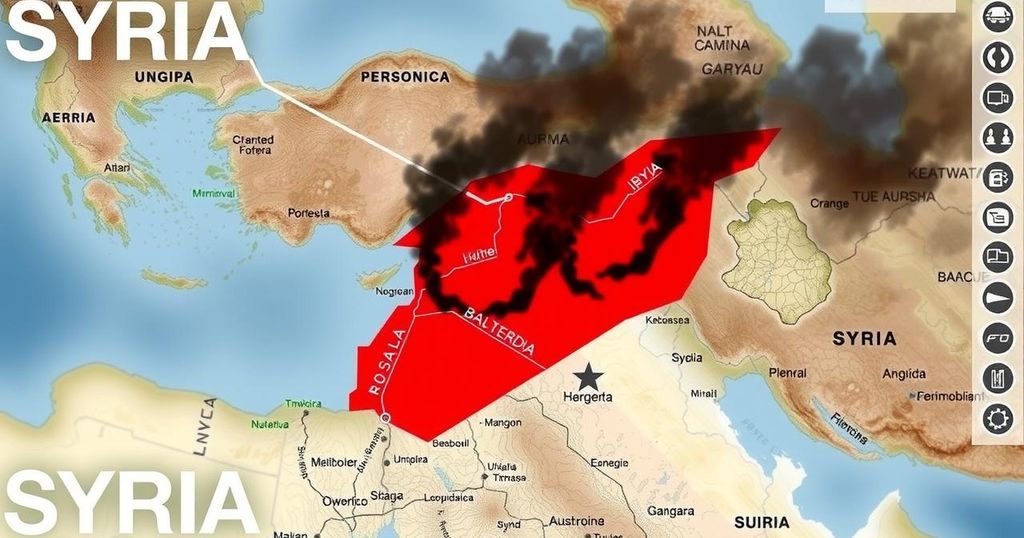Russian Military Movements: Potential Shift from Syria to Libya?
Recent developments in Syria have raised questions regarding the future of Russian military presence there, as satellite imagery indicates troop withdrawals and equipment relocation. Following the fall of the Assad regime, Russia is speculated to be considering a move to Libya, prompting discussions among analysts about the impact of these actions on regional security dynamics and NATO’s interests in the region.
The ongoing situation in Syria has prompted a wave of speculation among Middle East analysts regarding a potential withdrawal of Russian troops. Satellite imagery and air traffic monitoring have revealed significant movements at Russian bases in Syria, including the dismantling of attack helicopters and air defense systems for transport. Concurrently, Russian navy vessels departed their Syrian harbor prior to the recent regime change, fueling concerns over their next destination.
Russian officials have denied claims of troop withdrawal, asserting that they continue negotiations with the rebel opposition responsible for the power shift in Syria. Russia’s military presence in Syria is primarily maintained at its two key bases: the Tartus naval base and the Hmeimim air base, both of which have played a substantial role in supporting the Assad regime during the civil war. However, with the recent transition in power, Russia’s operational dynamics have come under scrutiny, particularly in light of reports suggesting the relocation of advanced military equipment to Libya.
The situation is further complicated by the interactions between Russia and the Hay’at Tahrir al-Sham (HTS), the current governing body in Syria, which has exhibited a pragmatic approach toward their Russian counterparts. However, analysts express concern that should Russia relinquish a significant military capacity in Syria, its leverage in Libya might increase, especially as Libya’s strategic significance grows amidst the continuing factions within the country.
Competing interests between Libya’s eastern and western governments, alongside ongoing foreign influences including those of Russia and Turkey, pose risks of further conflagration in an already unstable region. If Russia successfully consolidates its presence in Libya, it could pose considerable challenges to NATO and alter the balance of power in North Africa.
The Russian military’s involvement in Syria has been closely linked to its aim of maintaining influence and countering NATO operations in the region. Tartus serves as Russia’s only naval base outside of the former Soviet Union, while Hmeimim has facilitated military logistics in Africa since 2015. The recent fall of the Assad regime has precipitated discussions regarding Russia’s future military strategy and the potential relocation of its forces, which may include shifting its focus toward Libya. Libya’s political landscape has remained fractured since 2014, divided between opposing factions supported by foreign powers. Russia’s interest in establishing a permanent military presence in Libya is fueled by its desire for a naval base and enhanced strategic positioning, raising alarms within NATO circles regarding regional security and the potential for escalated conflict.
In summary, the evolving circumstances in Syria following the regime change have prompted increased scrutiny of Russian military movements and the potential implications for regional security in Libya. The speculated transition of Russian forces to Libya highlights shifting alliances and the impact of foreign military presence on local dynamics. The situation warrants close monitoring as developments unfold, given the possible repercussions for NATO and stability in North Africa.
Original Source: www.dw.com




Post Comment